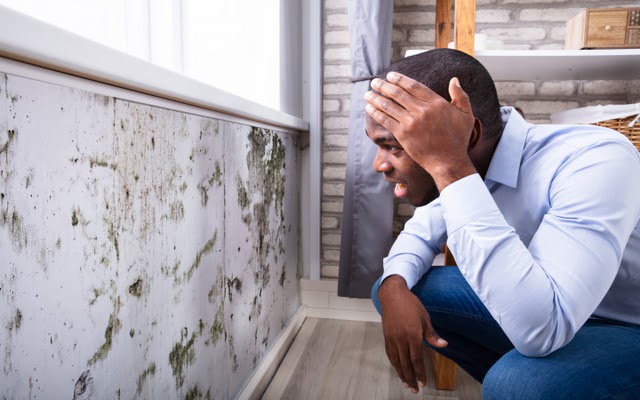
Have you ever been in a damp and humid bathroom that had thin layers of black film in cracks and crevices? You may have even smelled an unpleasant odor. If so, then you’ve encountered mildew.
Mildew is not as simple as some people believe. The term “mildew” is used to describe different types of molds and fungi. Some of these can be very different from what most people associate with mildew.
For instance, gardeners and scientists use mildew to refer to powdery or downy mildew, which consists of various species of fungi that grow on plants. These types of mildew grow on plants as parasites and can be very damaging to crops. They appear as white or gray dots on plants.
More commonly, however, most people use mildew when talking about mold growth. Sometimes you even hear the two words used together: mold and mildew. Although both are forms of mold, we usually use mold to describe mold that grows on food. Mildew is typically used to describe mold that grows on objects, such as shower walls, paper, and clothing.
Mildew thrives in hot and humid (moist) conditions. A damp shower in a house heated by the summer sun is the ideal spot for mildew to grow and multiply rapidly.
The specific black mildew that enjoys growing in showers is usually Stachybotrys chartarum, which is a specific type of mold. Besides being unsightly, it also produces a strong musty odor that often alerts people to the presence of mildew.
Mildew is not something to take lightly, as it can be harmful to your health. Some mildew contains toxins — known as mycotoxins — that can cause allergic reactions or illnesses in certain individuals. Mildew can cause a wide range of problems, including headaches, coughing, and irritation in the eyes and throat.
So how do you eliminate mildew? Once you notice it, you need to remove it. Bleach is one of the most popular cleaners used to kill mildew. You can also use vinegar or a variety of mildew cleaning products available at the store.
After getting rid of mildew, it’s important to prevent its return. In a hot and humid area, you may want to consider reducing moisture as much as possible. Using an exhaust fan in the bathroom and wiping down shower walls after a shower can help a lot. Some people also use dehumidifiers to help dry the air.
Try It Out
Ready to clean? Your parents can always use some extra help around the house. We believe the best way to learn more about mold and mildew is to go on a mold and mildew adventure around your own house.
Mold and mildew tend to accumulate in areas that experience a lot of moisture. Do you have a basement? If so, check down there!
You’ll also want to check in bathrooms, particularly around showers and bathtubs. You may also find mold and mildew around windows or doors.
Search high and low to find any mold or mildew that may be present in your house. Once you find some, take action!
Create your own homemade solution for removing mold and mildew (make sure to ask a parent for assistance!) and then begin the cleaning process! It is important to have rubber gloves, a brush, and a dry towel on hand.
Apply your homemade mold and mildew remover to any areas where mold or mildew is visible. Allow it to sit for approximately five minutes. After that, start scrubbing! Once you have successfully removed the mold or mildew, rinse the area with water and make sure it is completely dry. To prevent the return of mold and mildew, make an effort to keep the area dry in the future.





Leave a Reply